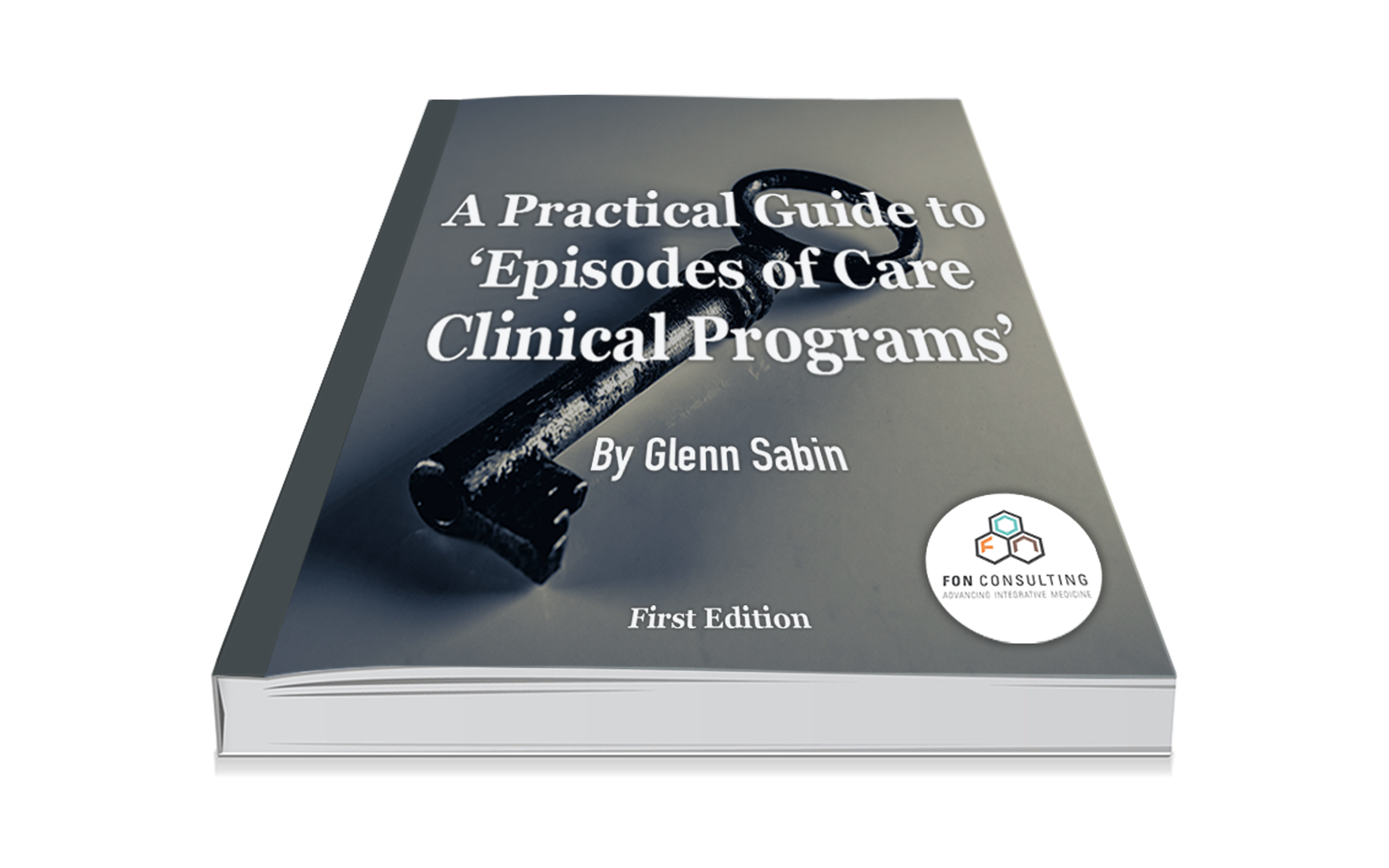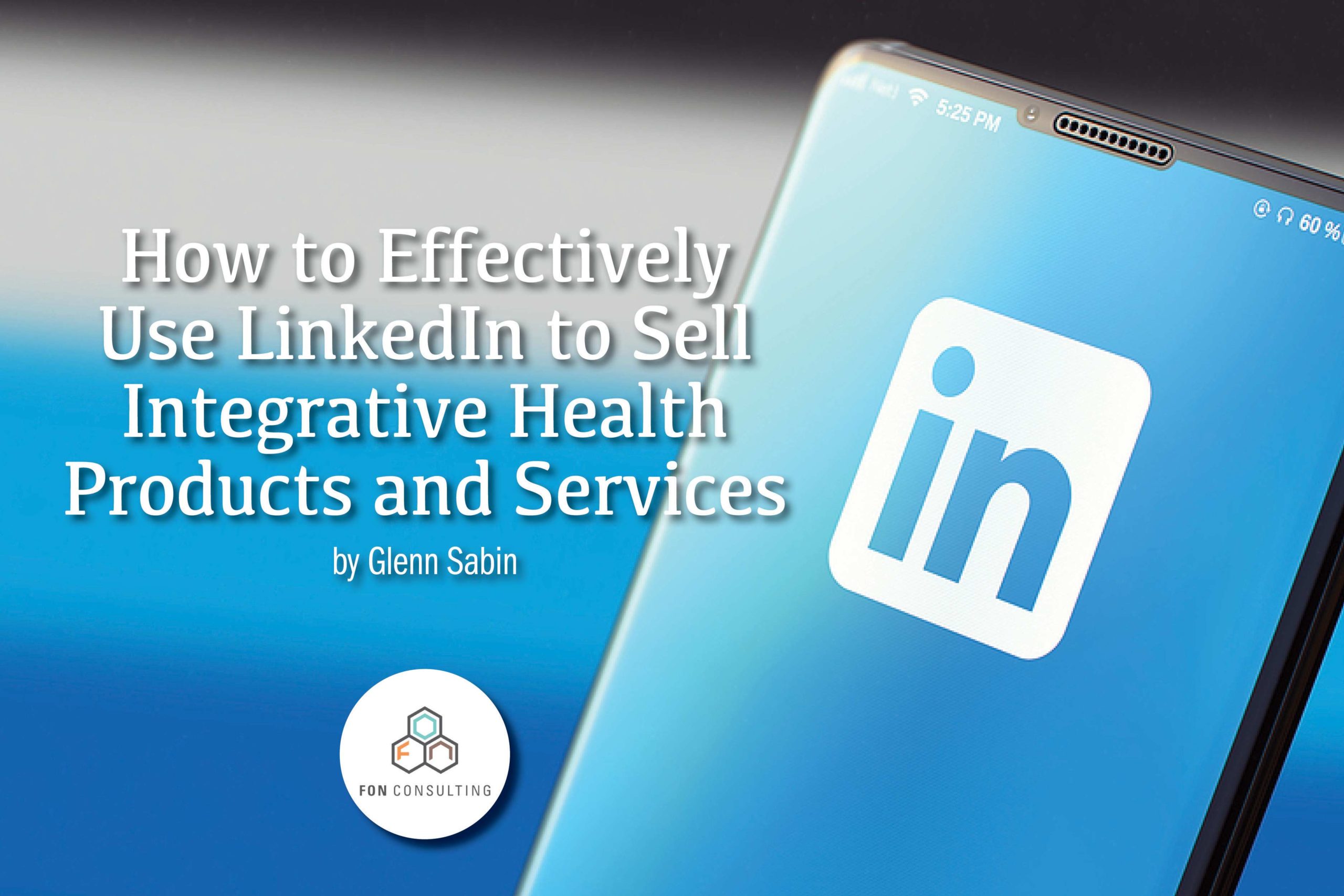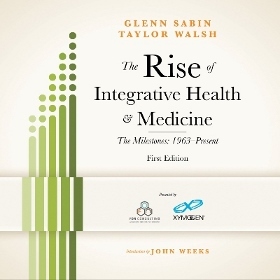How to Get Paid Delivering Integrative Medicine
By Glenn Sabin

The future of evidence-based integrative healthcare delivery is limited to its economic feasibility, at both the consumer and practitioner level. This post focuses on the latter.
Whether you are an MD, DO, ND, DC, LAc, LMT, dietician, nutritionist or practice one of a score of other integrative health disciplines, you need to get paid. It doesn’t matter if you run a small clinic as a solo practitioner or head up a large academic medical center. The provision of integrative medicine must be economically self-sustainable in order to become the standard of care. And, importantly, commensurate to your organization’s mission and the demographic it serves. There are several payment models to consider. Here are the most prominent:
Third Party—Insurance, Medicare
Depending on the services you provide and the insurance plans you accept, not everything is covered. Services such as nutrient IVs, acupuncture, dietician/nutritionist consults (notwithstanding type 2 diabetes and heart disease which is paid by most insurance) and nutraceuticals are always handled via direct pay. But many MD, DO, DC and ND-based practices work within an insurance payer model, including Medicare. Reimbursements can vary widely depending on policies. And docs are regularly dropping those plans that don’t pay. Suffice it to say, providers who perform 90-minute comprehensive new patient consults under a third-party payer model are losing money, or making very little. Even at the maximum allowed CPT level, providing qualitative, comprehensive integrative medical care with a focus on prevention and wellness is a tough way to make a living. Compare this model to a conventional primary care doc who sees six or more patients during this period, or performs three conventional physicals.
Direct Fee and Super Bills
Many integrative healthcare service providers are moving to a direct payment model whereby patients are requested to pay in full after their scheduled appointment. This cuts out substantial human resource overhead and the headaches associated with medical billing and collections. It frees up cash flow. And the provider sets her rates. The provision of super bills allows patients to file claims as out-of-network services. Assuming deductibles are met, customers are partially reimbursed (because they paid up front) for their outlay of monies according to their policy terms.
Concierge
Concierge medical services like MDVIP and SignatureMD have been around for a while now. Many docs in larger, affluent markets started moving in this direction before the current recession. Most were mid-career and looking to provide more comprehensive care by reducing their patient panel and eliminating the insurance grind. The annual fees can be pricy, and the services included in the annual fee can vary. The difficult economic environment has also led to higher than anticipated attrition for many practices. I have not run across many concierge model practices providing integrative medicine services.
Membership
Membership models are interesting. Like a concierge model, patients pay a set pre-set upfront fee. But membership fees tend to be charged monthly, not annually, and are typically a lot less expensive. Lolo Health in Oakland, California, is a multi-discipline primary care provider led by owner Lorenzo Puestas, LAc. Puestas launched Lolo Health in 2003 and switched to a membership model in September 2011. In order to retain patient volume, the center continues to accept insurance and is reportedly doing well.
Enjoying this article? Subscribe and get our latest, delivered straight to your inbox.
Hybrid
Hybrid models can include both third-party payers and direct payment. An example of this is the practice of family physician Mark Holthouse, MD. I learned about Holthouse’s practice in a piece Erik Goldman wrote for his Holistic Primary Care. Dr. Holthouse practiced for several years through an insurance model, shifted to a hybrid conventional insurance and direct pay model. According to the article, he sees insurance patients a few days each week and direct-pay patients the balance of his time. Working with Physician Care Direct (which, incidentally, gets paid a percentage of revenues for providing certain services), Dr. Holthouse is slowly shifting to a membership program using prepaid Access Cards. He states that he would one day like to shift 100% of his patient panel to the membership model.
Which Models are Self-Sustainable—And Who’s Getting Paid?
My company has consulted many integrative clinics and centers. I’ve had the opportunity to tour many programs, including larger academic centers. Additionally, I have carefully reviewed the limited available case studies. Bravewell Collaborative’s Best Practices in Integrative Medicine, conducted by McKinsey and published in 2007, was well done and instructive, but focused on their Bravewell Clinical Network, a group largely comprised of academic programs. (Bravewell updated some of this data in its 2012 study, Integrative Medicine in America.
From what I see, the insurance payer model, for now, generally does not work. The provision of comprehensive integrative new patient consults and follow up appointments does not make for economically sustainable delivery of integrative healthcare.
An exception would be those clinics and centers located in either rural or low income areas. Organizations serve different missions and demographics, and access to quality integrative medicine for all remains the goal.
Even in January 2014 when, in theory, the mandate under the Affordable Care Act kicks in to cover licensed providers of acupuncture, naturopathy, massage and midwifery—I’m thinking it will not make enough economic difference for those already providing these services. After all, this will represent a shift from mostly direct pay to an insurance model. More of these services will be paid through insurance, inevitably affecting their net payments. However, those relying on community and philanthropic support to subsidize these services should see an economic benefit.
The majority of the 60+ integrative medicine programs at the academic centers lose money. All but a few are using an insurance model. Most have very high overhead compared to private clinics. And with low margins to begin with, they provide their organizations low if any returns as a service line. It’s really not much different for community-based health systems. Many perennially rely on philanthropy as a way to prop up their clinical program.
Looking at a conventional, third-party insurance payer economic model, it remains impossible to reconcile traditional medicine—low touch, high tech, high margin—with the delivery of integrative healthcare—high touch, low tech, low margin. This is the underlying systemic problem not addressed under the Affordable Care Act. We are still incentivizing procedures and products over prevention and wellness. Ninety-five cents of each dollar is spent on existing medical conditions, mostly chronic. And it will be tough to solve this dilemma with the $10 billion remaining in the National Prevention Fund created by the Affordable Care Act and the economic incentives to be provided to certified, Accountable Care Organizations and patient centered medical homes in early 2014. But it is a start in the right direction.
About FON
FON is a leading integrative health and medicine business development and strategy consulting firm. FON specializes in custom solutions for growing patient volume, developing programs, and increasing product sales. Our practical business models are driven by innovative marketing, clear messaging, and customer engagement via branded storytelling.
Contact us today to schedule a complimentary 30-minute consultation to discuss your business development or personal brand needs.

Read Glenn’s story.





















